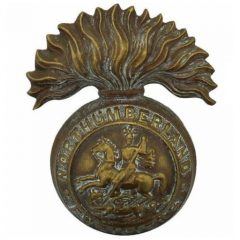Lt Col Alfred James Foster Context Within six weeks of the British mobilisation, the German Army had fought their way to within thirty miles of Paris before being checked at the Battle of…
You must be logged in to view the content of this Chapter.
Headquarters
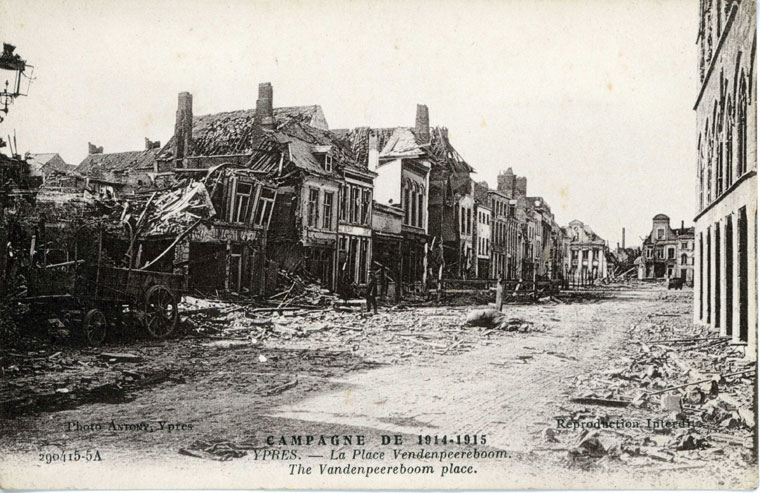
Lt Col Alfred James Foster Context Within six weeks of the British mobilisation, the German Army had fought their way to within thirty miles of Paris before being checked at the Battle of…
You must be logged in to view the content of this Chapter.
Historical Context - the “City of the Linen”. By the turn of the century Armentières, in the Artois region of Northern France, was an important centre of textile, printing, dyeing and brewing industries. It…
You must be logged in to view the content of this Chapter.
24th Oct 1917
On the night of 24th the 149th Bde relieved units of the 34th Division south of the Houthulst Forest and astride the Ypres to Staden Railway line. The 4th Bn moved into trenches in the right sub sector and the 7th Bn the left sub sector.
25th Oct 1917
At 8.31am Operation Orders for an attack were received from Brigade HQ.
4th Battalion War Diary
APPENDIX X A
OPERATION ORDER NO. 1A.
1. The 149th Infantry Bde will attack on the morning of the 26th inst, 4th NF on the right, 5th NF in centre and 7th NF on left, - 57th Div are attacking on our right, with 4th/5th Loyal North Lancs as their left battalion.
2. The battalion will attack on a 3 company frontage each company being on a platoon frontage.
‘A’ company on right, ‘B’ company in centre and ‘D’ company on left. ‘C’ Company will be in reserve on a 2 platoon frontage.
3. (a) Platoons will leap frog and capture and consolidate the objectives already given them i.e. FIRST WAVE to HUTS, SECOND WAVE to line V.2.3.1.6 – V.2.c.5.1. THIRD WAVE to final objective V.2.a.3.0 to V.2.d.15.55.
(b) Reserve company will move forward with attacking waves to a point approximately 200 yards west of the HUTS.
(c) ‘A’ company will detail parties to obtain touch with battalion on their right at the following points.
(a) Concrete shelter at V.8.a.1.8.
(b) Ditto at V.2.c.4.1.
(c) ROAD BRIDGE at V.2.d.0.6.
4. Two machine guns will accompany 4th wave of ‘B’ Company.
5. Two Stokes Mortars1 will be attached to ‘C’ company and will be available to fire at any strong points holding up the attack.
6. Barrage will begin to creep forward at ZERO + 8 minutes and will creep at the uniform rate of 100 yards in 8 minutes throughout. Lifts will be at 50 yards at a time.
7. Taping out of the assembly trench will be carried out under an officer from Battalion HQ. One line of tape will be laid from the Railway Embankment at point V.1.d.0.2. to V.7.b.6.5. Two guides will be left at the end of the tape on Railway Embankment. A short length of tape will be laid at right angles to assembly tape to mark the left of ‘D’ company, short lengths of tape will be laid at right angles to assembly tape every 130 yards to mark company frontages. The assembly tape marks position of leading wave.
8. ‘A’,’C’ and ‘D’ companies will move forward to assembly positions at 7pm tonight each company providing its own covering party. ‘B’ company will withdraw to the assembly tape at 11pm. Completion of assembly will be notified by code word ARRAS, sent by runner to battalion HQ.
9. 1 contact aeroplane will be flying over companies front at zero + 1 hour 30 mins and at zero + 3 hours heading troops will show their position to contact aeroplane only when called for
(a) by Claxon horn
(b) by series of white Very lights dropped from the plane.
10. RAP will be at PASCHAL FARM 2.
11. PRISONERS 1 man as escort to 5 Bosches
12. Reports will be forwarded to battalion HQ at TAUBE FARM 3 as frequently as possible and at least once in the first hour after zero.
13. Battalion HQ will open at TAUBE FARM at 7pm tonight.
14. Zero will be at the fall of the barrage. Time of this will be notified later, also synchronisation of watches.
15. General compass bearing of attack 55 degrees magnetic.
16. Acknowledge.
Issued at 1.30 pm
Copies to CO ‘A’, ‘B’, ‘C’ and ‘D’.
4th Battalion War Diary
CORRIGENDA TO OPERATION ORDER NO 1A
1. Owing to the swampy state of the ground on the right of our attack, it has been decided to attack on a 2 Coy frontage instead of a 3 Coy frontage. ‘B’,’C’ and ‘D’ companies will have dispositions exactly as laid down in O.O. no 1A.
2. ‘A’ company will NOT go to the assembly tape but will move from TRANQUILLE HOUSE 4 to TAUBE FARM at 9pm tonight, when they will be in battalion reserve.
3. Hot tea and rum will be brought up tonight 1 guide per company to be at TAUBE FARM at 11pm to guide carrying parties.
4. Acknowledge.
Issued at 2pm
Copies to CO, ‘A’,’B’,’C’ and ‘D’
The CO reported the change to Bde HQ:
25th Oct 1917
Communication between Bn HQ and the front line was extremely difficult as the route was under direct observation and subject to incessant shelling by the Germans. This was especially so on the line running parallel with the road north-west and south east of Tranquille House, because it appeared to be an enemy barrage line. There was no cover except for shell holes, so it had not been possible to lay a telephone wire, or for a visual signalling system to be established.
Two runners did manage to reach the front line coy and all operation orders were delivered safely. However, it was a close call, because they had mistakenly overshot the front line by at least fifty yards and had been stopped before they stumbled on the enemy.
Front line company were constantly shelled by our own Howitzers, and some casualties resulted.
At 7pm Bn HQ moved forward to Taube Farm and the R.A.P 5 moved to Paschal Farm from Olga Houses 6.
Between 7 and 9pm coys moved forward to their assembly positions.
The attack formation was altered twice in 12 hours. The original intention was, to attack on a 3 coy frontage, each coy being on a platoon frontage in depth, in 4 waves (1 platoon in each wave). After the relief it was realised that with the swampy ground on the Bn right flank, there would only be room for a two coy frontage. The CO reported this to Bde HQ (Appendix B).
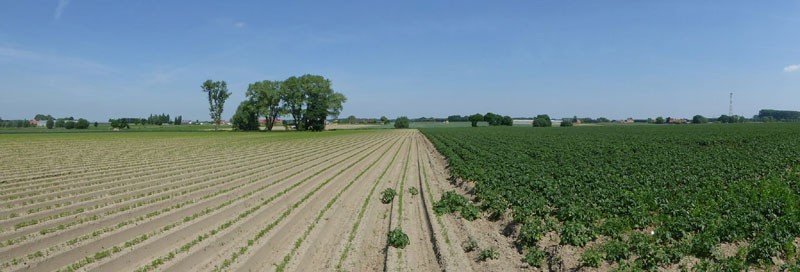
4th Battalion War Diary
APPENDIX B
L.T.3. CO’s report. “From reports received from the 11th SUFFOLKS," the right of my Battalion front is a swamp. Even if it is possible to assemble the right company, I do not consider they would be able to advance, but would have to be dug out. I propose with your permission to attack with two companies.only in the front line, one in support, and to keep the fourth company in reserve in TRANQUILLE HOUSE area. Conditions on rest of the front are such that if a man steps off a firm piece of ground into the slightest hollow he has to be dug out. There are very few firm pieces of ground away from the Railway and Roads.
Map 1 - 149th Brigade positions
25 Oct 1917
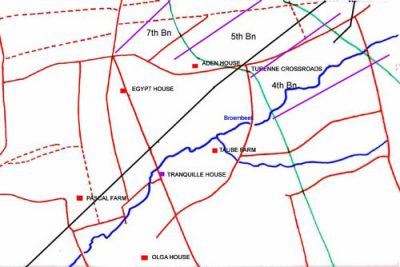
Summary of events
When 2nd Lt J.A. Burton actually laid the tape, he realised that there was only sufficient room for an attack frontage of one coy. Therefore, the front line platoon frontage was cut accordingly to one coy, the second coy was positioned to the rear of the right hand coy of the 5th Bn with instructions to wedge between the 4th and 5th Bn Coys at the front once the attack started. The third coy was held in reserve about one hundred yards to the rear of the front line coy (on a two platoon frontage) and the fourth coy under the Bn Cdr was positioned at Taube Farm and Tranquille House.
The Coys assembled in shell holes and dug-in, in the formation described above. A piece of tape was laid to mark the boundary between the 4th and 5th Bn. Hot food was packed in hay and carried up to the coys at the assembly points.
A leap frog system of attack, recently practised in training, was to be employed. The lead platoon was to take the first objective, the second platoon was to pass through to take the second objective, the third platoon the final objective. The fourth under the company commander were to be used for counter attack or consolidation according to the tactical situation.
26th Oct 1917
At 3am heavy rain began to fall again and at 4.05am the 4th Bn reported it was in position for the attack.
At zero hour, 5.40am, the barrage opened up and began to creep forward at a rate of one hundred yards every eight minutes. The fusiliers of the149th Bde rose to their feet to advance behind it, with the 4th & 5th Bn Loyal North Lancashires (57th Divn) on the right flank and the 35th Divn on the left. Had the 'going' been good, the troops who lay close up under the barrage (so close indeed that several casualties were suffered) waiting for the first "lift", would not have had a problem advancing at the rate of the creeping barrage.
'The rain had, however, done its deadly work, for all the gallant fellows could do was to drag themselves along through the thick clinging mud and water at a much slower pace than the barrage, which soon got ahead'. Then form "pill box" and shell hole murderous fire was poured upon them. Many fell dead; some of the wounded fell into the gaping holes of water and were drowned; fortunate were those who escaped, but on went the survivors' [zotpressInText item="{4R6FADJ9,244}"]
The allied barrage consisted entirely of shrapnel and was therefore quite useless against the first objective, which consisted of concrete huts. To make matters worse the rain continued to fall heavily and the condition of mud and water were perfectly appalling.
Bn HQ received a wire from the Bde Major at 8.50am stating that a wounded Forward Observation Officer had reported that the first objective had been taken and the men were advancing well to the second objective. This information proved incorrect because 2nd Lt Wood subsequently returned wounded and reported that casualties were heavy and the attack was held up in front of the Huts. The attack had actually ground to a halt about eighty yards west of the line of huts. The machine gun fire and sniping was so severe that any further advance was quite impossible and reporting the situation back to HQ extremely difficult. Two runners were sent to the front line to try and gather information but they both failed to return.
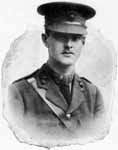
At 11am, 2nd Lt Burton was sent forward to reconnoitre and he confirmed that the attack was held up about one hundred yards short of the Huts. At 1pm Sgt Thompson returned from the front line and confirmed 2nd Lt Burtons’ report stating that casualties were very heavy. Similar news was brought down later by Capt J.V. Gregory. This information was relayed to Bde HQ by pigeon and signaled by Lucas Lamp. Several messages were sent during the afternoon. Ttwo platoons from the Reserve Company, under the command of 2nd Lts Peddie and Scott, were sent forward at 6pm to consolidate the original line held before the attack.
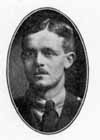
The Bn was relieved about midnight by the 4th Bn East Yorks and proceeded, via the duckboard track known as Railway Street 7, to Rose Crossroads camp 8. The 6th Bn DLI organised straggler posts in likely places to round up men returning from the front line and to guide them to camp.
Roll call revealed the appalling casualties suffered by the 4th Bn. 2nd Lts D.A.Smith, and W.Ruddy had been killed in action with 2nd Lt R.A.A Simpson later dying of wounds. 2nd Lts G.R.Charlewood, A.W.P.Leary, H.B.Bell, J.R.Ruddock and R.Wood were wounded, and 2nd Lt R.G.Rayner and H Stobbs were missing. Thirty-six fusiliers had been killed, one hundred and fifty-six wounded and sixty four were still missing. A total of two hundred and fifty six, more than fifty percent of those that had gone into action. The 5th Bn fared even worse with a total of 12 officers and 439 men either killed, wounded or missing. 7th Bn losses amounted to 11 officers and 246 men.
Summary compiled from:
[zotpress items="WPX27IS4" style="harvard1"]
[zotpress items="HUXKQ9EA" style="harvard1"]
[zotpress items="4R6FADJ9" style="harvard1"]
Casualties
Records show that at least 100 fusiliers from the 4th Bn were actually killed in action or died of wounds between the 25th and 27th of Oct 1917. For information on 4th Bn burial and memorial sites for casualties sustained in this battle, select the link.
4th Battalion War Diary
The following is a list of points noted in the attack:-
1. Two machine guns were attached to the battalion in the attack. They went forward with the support company (in rear of 5th Bn) and did excellent work.
2. Two Stokes Mortars were to be attached but did not succeed in getting ammunition forward.
3. Communication to Bde exceptionally valuable and wonderfully maintained under a heavy barrage by the Bn. Signalling Officer (2nd Lt W.C.Clemitson) and the other signallers. The wire to 5th Bn almost instantly maintained, visual to Bde also kept up although the lamp was knocked over three times, and pigeons.
4. Wounded. Appalling difficulty in getting wounded as the slightest movement in the front line was checked by Machine Guns and sniping.
5. Liaison. Lt W.B. Hicks acted as liaison officer between the 4th Bn and the Bde on the right flank. Liaison with the 4th/5th Loyal North Lancashires maintained through 5th Northd Fus, who had an officer from that battalion with them.
6. Rations Cannot be brought up by transport in these conditions. Men must carry two days rations and also two Tommy cookers.
7. Kit as laid down appear the best, though many packs will probably be thrown away.
8. Hot food should always be carried up to the troops the night before the attack - also RUM.
9. Guiding appallingly difficult owing to the scarcity of landmarks, obvious landmarks, such as the railway are dangerous as the enemy naturally concentrates his artillery on them. We suggest a double line of pickets with plain wire on them. This is not conspicuous and very helpful.-
4th Battalion War Diary
APPENDIX C
(i) MESSAGES during the action
L.T.19 timed 12.20pm. Wounded officer left company reports attack on huts in V.1.D held up by many machine guns about 150 yards west of Huts. Right company held up in same position. Right company of SEED (5th NF) held up on same line. Impossible to work round flanks owing to swamp on right and machine guns on left. AAA. I have one company still in reserve in TAUBE FARM and TRANQUILLE HOUSE area AAA I do not propose to make another frontal attack with this company, as this appears to me to be a reliable report. AAA the officer states that Huts are very little damaged and full of machine guns AAA. Unless I receive orders to the contrary I will move Reserve Company up tonight at dusk to take over and reorganise front line AAA. Am investigating this information and will report later. AAA Ground very swampy and casualties very heavy in wounded officers company.
LT.20 timed 12.40pm In continuation of my L.T.19 I am unable to reach front line companies owing to machine gun fire and sniping from Huts and concrete emplacements. South of Huts. AAA There is not the slightest doubt that the whole attack is held up 100 to 150 yards west of Huts. I am unable to ascertain definitely position of troops on my right but they do not appear to have made much progress. AAA I am unable to estimate casualties.
LT 21 timed ? A very reliable Sgt has just brought back a report from front line. He states that 50 of our men and 2 officers are lying about 100 yards west of middle of Huts. Remainder of 3 companies, he thinks, are casualties. Total about 300. BOSCH planes have been flying low over front line shooting at them. Bosches have also sniped majority of our wounded as they tried to get back. Attack started in excellent order and was clear of BOSCH barrage before it came down – a few men succeeded in reaching HUTS but have not come back. Remainder caught by machine gun fire from HUTS and both flanks. Can you please give me assistance of large party to get our wounded out tonight with stretchers. It requires about 6 men per stretcher.
LT 22 timed 3.44pm Ref B.M.871
I am sending up 2 platoons tonight at dusk. They will consolidate original front line held before the attack and remaining 3 company’s will withdraw. I should like to send them out of the line. Is this possible please, and can staff captain arrange billets for them (probably 70 or 80 men). If the other company is not to be relieved, could you send water, rum, hot food and rations up for them and battalion HQ. Guides could meet ration parties and stretcher parties at PASCHAL FARM. I should also like a large carrying party with stretchers. Guides as above. – Sent by pigeon and substance of it by visual.
149th Bde War Diary
Speaking generally, the Bde was ordered to attack in a north-eastern direction between the southern border of the Houthhulst Forest 9 and the Broembeek 10 on a frontage running in an irregular manner through Aden House 11, and the principal objectives included "Hill 23 12," "Colbert Crossroads 13" and the groups of huts about seven hundred yards south-west of Schaap Balie 14. Aeroplane photographs were unfortunately not very clear, but they revealed an area that was capable of an obstinate defence, and one that might be rendered impassable by heavy rain. The chief obstacles were a double row of concrete huts or "pill-boxes," and ground that was already dangerously full of water- holes.
Heavy rain began to fall again at 3am and the "very few firm pieces of ground" became less in number; the water, trickling at first down the muddy sides of shell holes, soon became small streams, filling the occupants of the shell holes with gloomy prospects of success in the attack; pools of water widened almost to small lakes. Even in the darkness it was possible to discern stretches of water out in No Man's Land across which the attackers would have to pass.
2nd Passchendaele - Military Units
34th Division Comprised of the 101st, 102nd and 103rd Infantry Brigades
The 101st Bde - Comprised of the 15th and 16th Bn - Royal Scots, 10th Bn - Lincolnshire Regt and 11th Bn - Suffolk Regt.
The 102nd Bde - Comprised of the 20th, 21st, 22nd and 23rd Bn - Northumberland Fusiliers.
The 103rd Bde - Comprised of the 24/27th, 25th and 26th Bn - Northumberland Fusiliers.
35th Division - - Comprised of the 104th, 105th and 106th Infantry Brigades
The 104th Bde - Comprised of the 17th, 18th, 20th & 23rd Bns - The Lancashire Fusiliers.
The 105th Bde - Comprised of the 15th & 16th Bns - The Cheshire Regiment, 14th Bn - The Gloucestershire Regiment and the 15th Bn - The Sherwood Foresters.
The 106th Bde - Comprised of the 17th Bn - The Royal Scots, 17th Bn - The Prince of Wales' Own, 19th Bn - The Durham Light Infantry and the 18th Bn - The Highland Light Infantry.
50th (Northumbrian) Division Comprised of the 149th (Northumberland) Bde, 150th (York & Durham) Bde and 151st (Durham Light Infantry (DLI)) Bde.
The 149th Bde comprised of the 4th, 5th, 6th and 7th Bn Northumberland Fusiliers.
The 150th Bde comprised 4th Bn East Yorkshires, 4th Bn Green Howards, 5th Bn Green Howards and 5th Bn Durham Light Infantry
The 151st Bde comprised the 6th, 8th, 9th Bn - DLI and 1/5th (Cumberland) Bn - Border Regt
The 149th MGC -
57th (2nd West Lancashire) Division -
The 170th (2nd North Lancashire) Bde - Comprised of the 2/5th Bn - King’s Own, 2/4th, 2/5th & 4/5th Bn - Loyal North Lancashire Regt.
The 171st (2nd Liverpool) Bde - Comprised of the 2/5th, 2/6th, 2/7th & 2/8th Bn - King’s.
The 172nd (2nd South Lancashire) Bde - Comprised of the 2/9th & 2/10th Bn - King’s, 2/4th & 2/5th Bn - South Lancashire Regt.

.
.
Summary of events
With the exception of the 4th Bn (ordered to move to the old German line north of Beaurains) and two sections of the 149th MGC who were to support the attack of the 150th Bde, the 149th Bde was to remain in billets at Ronville 2 and Guemappe 3 was taken. The 4th Bn reached Buck Trench 4, and the Divn frontline was advanced to a point not far from the outskirts of Cherisy 5. HQ was established at Telegraph Hill 6
23rd April 1917 (St Georges Day)
At 4.15am the front line Bns were reported in position. The 150th Bde attack was to be carried out by the 4th Bn East Yorkshires on the right and the 4th Bn Green Howards on the left. Five minutes before Zero hour two tanks nosed their way to the front and moved slowly in a north-westerly direction.
At 8am the Bn moved forward again to the O.G. 1st line (map ref: N.5.b) and remained there during the day at half an hour notice. The Bn moved forward at five minutes notice at 7.45pm to the Brown Line 7 and for tactical purposes came under the orders of the GOC 151st Bde.
During the early morning of the 24th the 151st Bde relieved the 150th Bde, who moved back into reserve in the Harp area 8; the 4th Bn were attached to the 151st Bde, the remainder of the 149th being in support.
At about 11.30am, the enemy was reported retiring in front of the 30th Divn, and the GOC of the 30th Divn stated that he was going to push on to the Blue line 9.
Wancourt
The Bn moved forward from the Brown Line under the orders of the 151st Bde. ‘B’ Coy were sent forward to the front line and came under the orders of the 5th Bn DLI. They dug and occupied a new trench connected to the right flank of the 9th Bn DLI. Their covering party captured four Germans. No contact was made on the right flank until 3pm at which time communications were established with the 5th Bn Border Regt who were to the rear and slightly right of them. The 5th Bn Borders agreed to come forward at night and dig and occupy a trench that would be connected with ‘B’ Coy on the left.
‘A’, ’C’ and ‘D’ Coys and Bn HQ arrived at the old British front line north of Wancourt Tower (dispositions as per sketch) 2.30am. Rations were brought up to the 5th Bn Border HQ in the Long Lane 10 and brought up to ‘A’, ‘D’ and HQ by ‘C’ Coy. There was insufficient time to deliver rations to ‘B’ Coy before daylight so the men had to consume their second lot of iron rations. ‘B’ Coy were subjected to continuous, heavy shellfire and persistent sniping. 2nd Lt R Johnson and five men were killed and 16 men were wounded.
('B' Coy or the Bn) Lewis Guns identified good targets at ranges varying round 1000 yards and inflicted several casualties on the enemy. One Lewis gun was destroyed by shellfire. The areas occupied by the remaining Coys were also subjected to considerable artillery fire, which was especially violent between 2.30am and 7am and again between 1.30pm and 2pm. No direct hits were obtained on the trench and no casualties were sustained in this line during daylight.
2pm A part of ten stretcher-bearers and ten men were sent out to collect wounded still lying on the battlefield.
The GOC 151st Bde was instructed to advance at 4pm under an artillery barrage. But, meanwhile, the 30th Divn had already reached the Blue line, and was digging in on it, and the 151st Bde was, therefore, ordered to conform immediately to the movement of the 30th Divn. The 5th Borders Regt swung up their right flank and obtained touch at about 4pm. But the 9th DLI, in the centre, with a Coy of the 4th Bn attacked, and had a sharp tussle with the enemy before occupying the Blue Line 11. (50th Divn)
3pm ‘B’ Coy under 9th Bn DLI orders (2.25pm) went forward one platoon to reconnoitre and capture an enemy trench 600 yards long astride the railway. The platoon captured the trench sustaining three casualties in the process.
Bn HQ received Operation Orders at 3.30pm stating that the 15th Divn were advancing on the left and 9th Bn DLI would support their advance with rifle, Lewis Gun and MG fire. Also that they would push forward patrols to reconnoitre and capture the German trench six hundred yards long astride the railway. OC 9th Bn DLI detailed ‘B’ Coy for this work and captured and held the trench as described above.
At 5.22pm 4th Bn HQ received a wire from OC 9th Bn DLI stating that one of the 'B' Coy platoons had just captured an enemy trench (from map ref: O.20.7.6. to O.20.C.1.9) and was holding it. Only three casualties were incurred. Fine piece of work. Lt Col B.D. Gibson and 2nd Lt Burton went forward to reconnoitre the new positions occupied by ‘B’ Coy and ‘A’ and ‘D’ Coys.
Another platoon was sent forward under heavy artillery and machine gun fire to help hold it. Under cover of darkness one more platoon of ‘B’ Coy was sent forward to the trench and three strong points were constructed, two north and one south of the railway. [zotpressInText item="{4R6FADJ9,}"]
10pm ‘A’ and ‘D’ Coys dug a new support trench between the railway and the Cojeul River and occupied it. One machine gun was attached to each Coy. At 10.30pm Bn HQ moved to a dugout at the old German gun pits at the north end of old German support line between Cojeul River and the railway. ‘C’
2nd Scarpe - Military Units
15th (Scottish) Division - Comprised of the 44th, 45th and 46th Infantry Brigades
The 44th Bde - Comprised of the 9th Bn - Black Watch, 8th Bn - Seaforth Highlanders, 8th & 10th Bns - Gordon Highlanders, 7th Bn - Camerons.
The 45th Bde -Comprised of the 13th Bn - Royal Scots, 6th & 7th Bn - Royal Scots Fusiliers, 6th Bn - Camerons, 11th Bn - Argyll and Sutherland Highlanders.
The 46th Bde - Comprised of the 10th Bn - Scottish Rifles, 7th & 8th Bn Kings Own Scottish Borderers, 10th & 11th Bn - Highland Light Infantry, 12th Bn - Highland Light Infantry.
30th Division - Consisted of the 89th, 90th and 91st Bde.
The 89th Bde comprised of the 17th, 18th, 19th and 20th Bns - The Kings Liverpool Regiment
The 90th Bde comprised of the 16th, 17th, 18th and 19th Bns - The Manchester Regiment.
The 91st Bde comprised of the 20th, 21st, 22nd and 24th Bns - The Manchester Regiment.
50th (Northumbrian) Division Consisted of the 149th (Northumberland) Bde, 150th (York & Durham) Bde and 151st (Durham Light Infantry (DLI)) Bde.
The 149th Bde comprised of the 1/4th, 1/5th, 1/6th and 1/7th Bn Northumberland Fusiliers
The 150th Bde comprised 1/4th Bn East Yorkshires, 1/4th Bn Green Howards, 1/5th Bn Green Howards and 1/5th Bn Durham Light Infantry
The 151st Bde comprised the 1/6th, 1/8th, 1/9th Bn - DLI and 1/5th (Cumberland) Bn - Border Regt.
149th MGC -
Bibliography
[zotpress items="HUXKQ9EA" style="harvard1"]
[zotpress items="4R6FADJ9" style="harvard1"]
11th Aug 1916
The 4th Battalion (Bn) left Vth Corps reserve at Meteren1 and entrained at Bailleul2, destined for the town of Doullens3 some 70 km further south. After a three hour march from Doullens they arrived in their billeting area around Fienvillers4. This was the first time that the Bn had left the Ypres area since landing in France sixteen months earlier.
The 12th to the 14th were largely devoted to route marches to raise fitness levels after the such a long period in the trenches. Reveille on the 15th was very early, the Bn setting out on an eight mile to Naours at 4.40am. They were billeted here for the day, then marched to Pierregotte5 for another overnight stop and then on to Henencourt Wood6. Trench attacks were practised in Henencourt Wood until the 28th, when bad weather curtailed training for three days. Training recommenced with night operations alongside the 7th Bn on the 31st, but then the weather deteriorated again and training had to be curtailed for four days. A varied program of training began on the 6th of September, geared principally towards the Bde Sports Day which was held on the 8th.
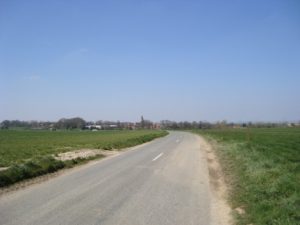
Saturday, 9th Sep 1916
At 3pm, the 4th Bn moved from Henencourt Wood, via Millencourt7 and Albert8, to Becourt Wood9, situated approximately two miles east of Albert. The 50th Division (Divn) were moving into the front line, between the village of Martinpuich10 and High Wood11, in preparation for an attack. The 149th Bde were assigned the right flank of the sector and the 150th Bde the left. That evening the 5th Bn moved into the front line and the 6th Bn into the support lines.
Sunday, 10th Sep 1916
Little occurred apart from the officers and NCOs reconnoitring the front and support lines.
Monday, 11th Sep 1916
By 7am, the 4th Bn were encamped in Becourt Wood, the 7th Bn in Quadrangle Trench12 and the 6th Bn were established in the support lines. The 5th Bn occupied the front line which consisted of Clark's Trench13 and the posts out in front, notably Eye Trench14. They also occupied part of 6th Avenue East15 and the new Intermediate Trench16, east of its junction with Jutland Alley17.
At 7.25am OC 149th Bde (Brigadier-General Clifford ) set out with his staff captain (Capt D Hill) to reconnoitre the assembly trenches and was shot dead by a sniper whilst he was inspecting Eye Trench. Lt Col Turner CMG (OC ?Bn) assumed temporary command of the Bde. Meanwhile the 4th Bn received a draft of fifty men who had been transferred from the Norfolk Regt.
During the day the 149th Bde front line was extended westwards to include Jutland Alley. The boundary between the 149th Bde and 150th Bde now ran from the junction of Clark's Trench with Jutland Alley to the cross roads (map ref: S.8.b6.9), road junction (map ref: S.8 C.9.7), O.G. Trench (map ref: S.14 A 2.6) and the north-west corner Mametz Wood18.
That night the Bde handed control of the extreme right flank of their sector to the 142nd Bde (47th Divn). The 50th Divn boundary with the 47th Divn now ran from Clark's Trench (map ref: S.3d.2.81/2) to the windmill (map ref: S.9.C.3.9), the road (map ref: S.8.d.9.1), crossroads (exclusive to 149th Bde) (map ref: S.14 b 1.5), point on road (map ref: S.13 b1.0), road inclusive to 149th Bde (map ref: X24 a 8.8) and thence to point in Quadrangle Trench (map ref: X 23 C 4 61/2).
Tuesday, 12th Sep 1916
The preliminary bombardment for the attack commenced, however Bn positions remained unchanged.
Wednesday, 13th Sep 1916
Between 5 and 6am the 4th Bn moved by platoons to the south-west corner of Mametz Wood.
“Mametz Wood presented a terrible appearance. Bitter fighting had take place for the possession of the wood and Contalmaison village west of it. Swept by an awful holocaust of shellfire, first by British guns and then by the German artillery on the wood passing into our hands, it had become a place of evil repute”. [zotpressInText item="{4R6FADJ9,140}"]
Over the next two days the 4th Bn was supplied with all the equipment necessary to bring it up to full fighting order. Battle formations and artillery arrangements were thoroughly planned by the officers and Brigadier-General Ovens CMG assumed command of the Bde.
Thursday, 14th Sep 1916
At 9.30pm the Bn moved from Mametz Wood via the ‘Quarry’19 and then overland to its battle position on the right flank of the 149th Bde sector.
The Battle of Flers/Courcelette continued - go to 15 Sep 1916
4th Battalion War Diary
The author has coloured this map for clarity
Lines British trenches - dark blue, German trenches - red, pre-war road & tracks - yellow, contours - brown.
Shading 4th Bn line of attack - yellow, 7th Bn - purple, 150th Bde - brown
High Wood - green, Martinpuich - red
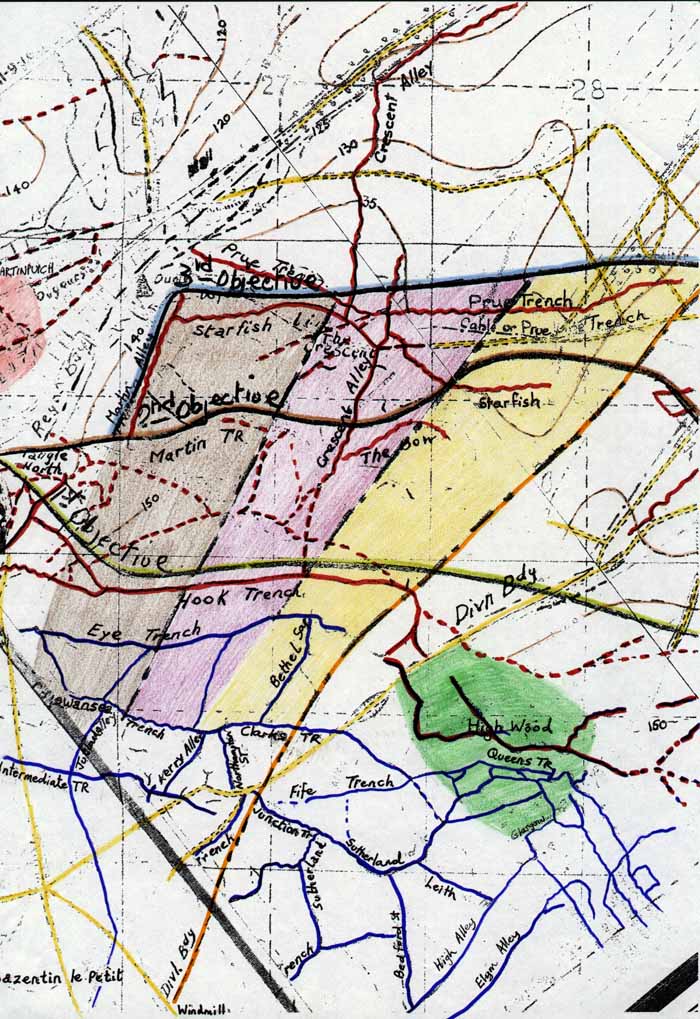
Page from 149th Bde War Diary
15 Sep 1916
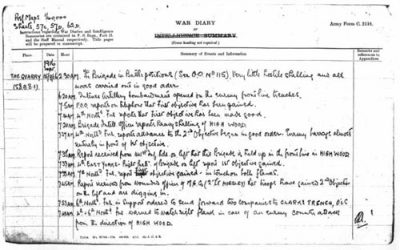
Friday, 15th Sep 1916
By 2.30am, the entire 50th Divn was assembled in its' battle positions. The 150th Bde were on the left flank of the 50th Divn sector with the 15th (Scottish) Divn to its immediate left, the 149th Bde were on the right flank with the 47th (London) Divn to their right, immediately south of High Wood. The 151st Bde was held in reserve.
The 7th Bn assembled on the left flank of the 149th Bde sector and sited its' headquarters (HQ) in Clark's Trench (map ref: S.3a 1,0). The 4th Bn moved into the two lines of assembly trenches on the right flank, connecting Bethel Sap20 and Jutland Avenue, to the north of Clark's Trench (principally Eye Trench) (map ref: S.3b 6.6 - S.3b O5.5.). Running from left to right the 4th Bn Coys were ordered D, B, A and C. Bn HQ was sited in Clark's Trench (map ref: S.3c.4.9). The 6th Bn manned the support line with its' HQ at 'New Quarry' (map ref: S8d 9.9.5). The 5th Bn was held in reserve with HQ at the 'Old Quarry' (map ref: S.8b.8.1). 149th Bde HQ was located in 'The Quarry' at (map ref: S.8b.8.1).
The 50th Divn were given three objectives for the attack planned to commence at 6.20am. The first was Hook Trench21, which ran westward from High Wood along the top of a ridge to a point south east of Martinpuich. On the reverse slope of the ridge at about 500 yards distance was the second objective; Martin Trench22, The Bow23 and a portion of the Starfish Line24. The third objective was Prue Trench25 and the left end of the Starfish Line. These three objectives were known as the Brown, Green and Blue Lines respectively. A communication trench known as Crescent Alley26 linked the enemy first and second lines with their third line and the village of Eaucourt L’Abbaye27. The 50th Divn would attack from a line approximately eleven hundred yards wide, widening to eighteen hundred yards at the final objective.
The 4th Bn were faced with an unenviable task. Earlier fighting had left a 'dog-leg' in the front line, therefore the 4th Bns' assembly (Eye) trench was three hundred yards further forward than those of the 47th Divn on the right flank. If the fusiliers did not delay their advance until the 47th Divn were alongside they would be totally exposed to enfilade fire from enemy machine guns sited in the strongpoint on the ridge top at the north west corner of High Wood (Bois De Foureaux). From this strongpoint it was possible for the enemy to rake the ground between the wood and Martinpuich to the west. The strongpoint had been repeatedly attacked in the weeks preceding, but with no success. However, if High Wood was outflanked by the 4th Bn, there was the possibility of capturing trenches eight hundred yards to the rear of the wood and cutting off the enemy units in it. The decision was taken for the 4th Bn to advance at zero hour.
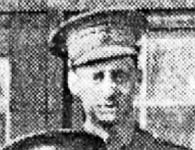
The assault on the first objective, assisted by tanks for the first time in history, commenced on time. Two of the tanks supported the 150th Bde on the left flank and three supported the 47th Divn on the right. Around 7am, 4th Bn HQ recorded its first situation report from the attacking troops. It was sent by OC 'B' Coy (Capt L.D.Plummer) and stated that; Hook Trench had fallen with little opposition, contact had been established on the left flank with ‘D’ Coy (OC - Capt H.H. Bell) and the 7th Bn and that the 7th Bn were in contact with the 4th Bn East Yorks (150th Bde). Shortly after this message another was received stating that wounded men from ‘B’ Coy were returning to the start point.
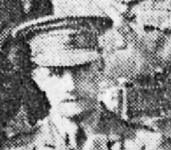
4th Bn HQ telephoned Bde HQ at 7.14am to report that the first objective had been 'made good'. However, the 4th and 7th Bns had just begun to dig in at the first objective when they came under heavy machine gun and rifle fire from the direction of High Wood. The fusiliers took shelter until it was time to advance on the second objective at 7.20am.
The time arrived and the 149th and 150th Bdes climbed out of Hook Trench and advanced behind a creeping artillery barrage moving forward at fifty yards per minute. At the same time a Coy from the 6th Bn, (OC - Capt Tweedy), moved forward to occupy and consolidate Hook Trench.
At 7.27am Bde HQ received a report from the 4th Bn stating that the advance to the 2nd objective had begun in good order and that the enemy barrage was falling almost entirely in front of the 1st objective. This was followed at 7.35am by a report from the 141st Bde stating that they were 'held up' in the front line in High Wood.
The second objective was captured and fusiliers of the 4th Bn entered the Starfish Line, but enemy fire from both flanks inflicted very heavy casualties on them. With the 47th Divn held up in High Wood and unable to provide any support on the right flank, the 4th Bn were forced to fall back to Hook Trench. The severe difficulties experienced by the 47th Divn, in High Wood, meant that the right flank of the 4th Bn was now dangerously exposed and would had to be carefully guarded from attack. Hook Trench and Bethel Sap were strengthened and made secure.
At 7.45am 4th Bn HQ received a message from Bde HQ stating that the 47th Divn attack on High Wood had ground to a halt and that the 5th and 6th Bns were now advancing in order to reinforce the attack.
Col Gibson had no men to spare in Clark's Trench, so at 8.05am he wired for another Coy to be sent forward to Clark's Trench with the intention of forming a defensive flank in Bethel Sap, and sent 2nd Lt Wilson (Bn HQ) to assess the situation to the right of Hook Trench. His report stated that the north end of Bethel Sap and right end of Hook Trench was being swept by machine gun fire from High Wood.
At 8.20am 4th Bn HQ received a further message from Bde HQ, which stated that the London Irish were unable to advance in High Wood, so they were now trying to work round it. The 4th Bn was ordered to assist them by directing Stokes Mortar and Lewis Gun fire from Bethel Sap onto the north western edge of the wood (map ref: S3B 8.6), but not to fire into it.
At 8.25am two Coys from the 5th Bn were sent forward to Brecon Trench28 and Intermediate Trench and shortly afterwards a Coy from the 6th Bn (OC - Capt Demford) were placed at the disposal of Col Gibson by OC 7th Bn. Half of this Coy was sent to Bethel Sap and half to the left end of Hook Trench with orders to work along half right and form a defensive flank. At 8.50am 2nd Lt Wilson's findings were reported to Bde HQ by Col Gibson. However, by 9am further reports were sent stating that Stokes, Vickers and Lewis guns were protecting Bethel Sap and that Hook Trench was held for a few yards east of its junction with Bethel Sap. At 9.05am the 9th DLI were sent forward to assist the 149th Bde.
At 9.15am a wounded NCO from the 4th Bn reported that the 2nd objective had been reached on the right flank, however, they had been forced to retire due to the machine gun fire coming from the right flank.
At 9.25am the 4th Bn reported that the enemy had launched a bombing attack on Bethel Sap from the direction of High Wood, this was quickly followed by a request for bombers to be sent forward to assist with the defence. At 9.39am a Coy from the 6th Bn, who by now were in Clark's Trench, were placed at the disposal of OC 4th Bn and a Coy from the 5th Bn moved forward to take its place.
The 4th Bn received a message at 9.45am, stating that Divn HQ had directed that Hook Trench must be made good and strengthened as far right as the Divn boundary. Hook Trench and Bethel Sap were strengthened and the right flank was secured as far as it was possible, with Lewis Gun and Stokes Mortar fire employed to disperse the continued attacks by enemy bombing parties from High Wood.
At 10am the 5th Bn were ordered to move three Coys forward to Brecon Trench and to be prepared to support 4th Bn should an enemy counterattack from High Wood materialise. Parts of the third objective (Starfish Line) fell to the 150th Bde around this time, but the 4th Bn East Yorks were forced to fall back to Martin Trench because they were so exposed on the right flank. Elements of the 7th Bn had managed to reach 'The Bow' and the sunken road immediately south of it by 10.12am, but the 4th Bn had been cut to pieces by the fire from High Wood
While fighting continued on the right flank to the north-west of High Wood, where the 6th Bn were now providing a defensive flank.
10.10am 4th Bn reported having sent half Coy to Bethel Sap and half Coy to left flank of the 1st objective to bomb down Hook Trench. Enemy still bombing down the right flank of Hook Trench.
10.12am the 7th Bn reported that the Sunken road and Bow Trench, just short of the 2nd objective, had been reached.
“By 10.30am so little progress had been made that Pulteney curtailed the corps' effort for the day and ordered the 50th and 47th Divns to aim only for the second of their three objectives.” (Farrar-Hockley).
At 10.35am a Coy from the 5th Bn (OC - Lt Daglish), arrived in Clark's Trench to garrison it. At 10.40am 2nd Lt Wilson was sent forward once more to assess the situation around Hook Trench. Half of Lt Daglish’s Coy was sent forward to bomb round Hook Trench on the right and make contact with Bethel Sap.
At 11.30am heavy artillery bombarded the north west corner of High Wood at the request of the OC 141st Bde. As the 47th Divn gradually worked round High Wood the enemy began to retire and were again caught by machine gun fire from the 149th Bde. Approximately one hundred Germans who had been caught in this machine gun fire subsequently surrendered. High Wood was then cleared, step by step.
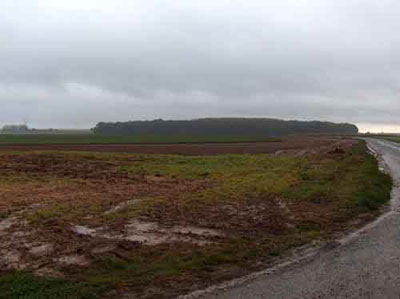
News of the frontal attack on the second and third objectives was slow to come in and was principally based on disconnected statements from wounded men for quite some time.
At 11.40am 2nd Lt Wilson returned to Bn HQ and reconfirmed his previous report. Lt Westrope RFA reported that he had taken command of ‘C’ Coy because all of its officers had either been killed or wounded. Lt Westrope was himself then hit, so a Cpl led the 'C' Coy attack against the second objective, which they appear to have reached.
By 12 noon all of the 6th Bn were involved in the action, so the CO (Col Spain) moved his Bn HQ forward into Clark's Trench.
By 1pm the 47th Divn had succeeded in clearing the enemy from High Wood, but it was to late the damage had been done.
By 3.30pm shellfire had forced all of the 4th Bn back to Hook Trench. So when Col Gibson moved his HQ into it he discovered that it was in a poor state with a muddle of fusiliers from all four Bns. However, the men were quickly sorted into their Bns and communications established with the Bn of the 47th Divn on
their right flank. At this time there were also approximately one hundred men of the 7th Bn in the Sunken Road forward of Hook Trench and south of 'The Bow'29. With the exception of a handful of men that withdrew with 2nd Lt Browne (Bn HQ) around 1.30am on the 16th, when part of the 47th Divn arrived, all men of the 149th Bde forward of the Sunken Road had become casualties. This was still the situation reported to Bde HQ at dusk.
At 4pm it was reported to 50th Divn HQ that the 150th Bde had been shelled out of the Starfish Line and were holding on to Martin Alley and Martin Trench.
At 5.45pm General Wilkinson ordered the 151st Bde to launch an assault on Prue Trench between the right boundary of the Divn and Crescent Alley at 7.30pm. The 150th Bde were tasked with occupying the rest of Prue Trench and linking up with the 15th Divn in Martinpuich.
The dispositions of the 149th Bde at 6.55pm are thus given in the Bde diary;
“Scout officers have been in touch with a body of men, strength unknown, holding part of Starfish in M.34.a (second objective on right of Divn front). About one hundred men consolidated strong point M.33.D.26 (this was the sunken road between the first and second objectives, occupied by the 7th Bn).” (50th Divn)
About 7.30pm. The 151st Bde passed through Hook Trench to attack and consolidate the Starfish Line and Prue Trench, where the situation had been unclear all day, but the attack failed.
About 9.40pm the 5th Bn Border Regt, 6th Bn DLI and 9th Bn DLI assaulted Prue Trench east of Crescent Alley following a special bombardment.
Saturday, 16th Sep 1916
At 4.45am a message was received from 149th Bde HQ stating that 151st Bde were making every effort to occupy and consolidate the Starfish Line.
At 6.45am the 4th Bn received a further message stating that, after a fifteen minute long bombardment, the 151st Bde would launch an attack at
9.25am to seize and occupy Prue Trench, east of Crescent Alley. Some parties from the 5th Bn Border Regt and 9th Bn DLI reached the objective, but they were forced back and the attack failed. Not even the Starfish Line was secured. During this time the 4th Bn maintained its position in Hook Trench alongside its HQ under constant bombardment from 5.9’shells.
“West of Crescent Alley, 150th Bde sent the 5th Bn DLI to attack Prue Trench but they were unsuccessful, having swerved to far to the left. Later in the day, attempts were made to bomb along Prue Trench from Martin Alley, but little ground was gained.” (McCarthy, p.110).
From subsequent information it runs clear that the 4th Bn took part of the second objective, and advanced to the third objective (Prue Trench) on the morning of the 15th. Both these trenches were evacuated by the enemy during the attack, and only held afterwards at each end of our front by Machine guns and bombers. In the afternoon 149th Inf Bde was allocated to Divn reserve and the Bn left Hook Trench for Mametz Wood30.
By 2pm the 50th Divn front line ran from the eastern end of Hook Trench - The Bow; part of Crescent Alley; Martin Trench; Prue Trench and Starfish Line and the west of Crescent Alley and Martin Alley.
Casualties
The 4th Bn sent twenty-two officers and six hundred and ninety-five men into action that morning. The subsequent roll call revealed that 10 officers and 110 men had been killed, 7 officers and 229 men wounded and 143 were missing.
Records show that at least 180 fusiliers from the 4th Bn were actually killed in action or died of wounds during the Battle of Flers-Courcelette. For information on 4th Bn burial and memorial sites for casualties sustained in this battle, select the link.
In 1934 the body of a British soldier was uncovered near High Wood. It was in the process of carefully removing the body for burial at the nearby London Cemetery Extension that Imperial War Graves Commission staff uncovered the dog tags of Sgt Surtees Forster.
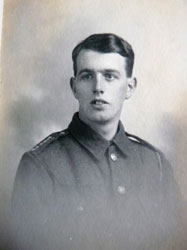
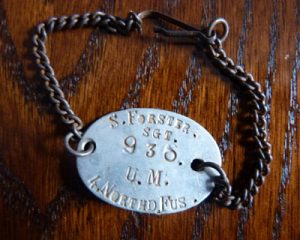
Bibliography
[zotpress items="WPX27IS4" style="harvard1"]
[zotpress items="HUXKQ9EA" style="harvard1"]
[zotpress items="4R6FADJ9" style="harvard1"]
[zotpress items="5MC7CZF6" style="harvard1"]
[zotpress items="E5S9ZH42" style="harvard1"]
[zotpress items="ZZCPTDHK" style="harvard1"]
[zotpress items="XGEW4MF2" style="harvard1"]
Flers/Courcelette - Military Units
15th (Scottish) Division - Comprised of the 44th, 45th and 46th Infantry Brigades.
44th Bde - Comprised of the 9th Bn - Black Watch, 8th Bn - Seaforth Highlanders, 8th & 10th Bns - Gordon Highlanders, 7th Bn - Camerons.
45th Bde -Comprised of the 13th Bn - Royal Scots, 6th & 7th Bn - Royal Scots Fusiliers, 6th Bn - Camerons, 11th Bn - Argyll and Sutherland Highlanders.
46th Bde - Comprised of the 10th Bn - Scottish Rifles, 7th & 8th Bn Kings Own Scottish Borderers, 10th & 11th Bn - Highland Light Infantry, 12th Bn - Highland Light Infantry.
47th (1/2nd London) Territorial Division - Comprised of the 140th, 141st and 142nd Infantry Brigades.
140th Bde - Comprised of the 1/6th Bn - The London Regt (Finsbury), 1/7th Bn - The London Regt (Shoreditch), 1/8th Bn - The London Regt (Post Office Rifles) and 1/15th Bn - The London Regt (Civil Service Rifles).
141st Bde - Comprised of the 1/17th Bn - The London Regt (Popular & Stepney Rifles), 1/18th Bn - The London Regt (London Irish Rifles), 1/19th Bn - The London Regt (St Pancras) and 1/20th Bn - The London Regt (Blackheath & Woolwich).
142nd Bde - Comprised of the 1/21st Bn - The London Regt (1st Surrey Rifles), 1/22nd Bn - The London Regt (The Queens - Bermondsey), 1/23rd Bn - The London Regt (Battersea) & 1/24th Bn - The London Regt (The Queens - Southwark).
50th (Northumbrian) Territorial Division - Comprised of the 149th, 150th and 151st Infantry Brigades.
149th (Northumbrian) Bde - Comprised of 1/4th, 1/5th, 1/6th and 1/7th Bns - Northumberland Fusiliers.
150th (York & Durham) Bde - Comprised of 1/4th Bn East Yorkshire Regt, 1/4th & 1/5th Bn - Green Howards and 1/5th Bn Durham Light Infantry
151st (Durham Light Infantry) Bde - Comprised of 1/5th Bn - Border Regt, 1/6th, 1/8th and 1/9th Bns - DLI
3rd to 8th Apr 1916
'The Wytschaete sector ran from the neighbourhood of Spanbroekmolen (in the German lines) thence northwards in an irregular line, crossing Vandamme Hill to the Vierstraat - Wytschaete road, just north of Byron Farm; thence the line bent in a north easterly direction to just south of the eastern extremity of Bois Confluent' (Wyrell. p.118).
All three Bdes were in the line, with the 149th Bde in the centre section from the left flank flank of the 150th Bde to just north of Byron Farm - trenches H3 to L5.
The 4th Bn had a relatively quiet six day tour in the trenches compared to the rest of the Northumberland Bde. Nevertheless, on the 8th the enemy scored a direct hit on a dug out (L.7L) with a heavy shell, killing two men and wounding four. Eight men were also wounded by splinters, although the wounds were slight and could have been avoided, if they had been in a properly constructed trench. The Bn was relieved by the 5th Bn on the 8th and proceeded to Locre, for what they believed was six days rest.
During the afternoon of the 3rd the 50th Divn HQ moved from Hooggraaf to Westoutre, and General Wilkinson assumed command of the new sector at 3pm.
9th to 13th Apr 1916
Unfortunately, the rest period was brought to any early end by heavy enemy artillery activity, which began on the 9th, compounded by bad weather on the 12th and 13th. Casualties in the front line were high and led to the relief of the 5th Bn by the 4th on the night of the 13th.
TRENCHES
14th - 15th Apr 1916
Two quiet days.
18th Apr 1916
There were three heavy, but short artillery barrages from the enemy on the 18th and the 50th Divn artillery retaliated. Fortunately there were no Bn casualties. The Bn was relieved in the trenches by the 5th Bn and proceeded to Bde Reserve. Three Coys were sent to farm billets, but one was left in the support trenches. In response to all leave being cancelled and those on leave being recalled, the latter returned on this day.
19th Apr 1916
As this was the first day out of the trenches, Coys were rested and had the use of the baths at La Clytte.
20th Apr 1916
The 20th was the first anniversary of the Bn arriving in France. The CO inspected the Kemmel defences, prior to one Coy being sent there, in accordance with dispositions to be taken up next week.
21st - 22nd Apr 1916
Nothing of note took place other than the church services held on Good Friday (21st) and the relief of the 5th Bn in the front line trenches on the 22nd.
23rd Apr 1916 St Georges Day.
As the patron saint of the Northumberland Fusiliers was St George, all the fusiliers wore roses.
24th - 25th Apr 1916
Except for a daily artillery barrage by the Germans, this was a relatively quiet tour, lasting only three days. The 4th Bn was relieved by the 13th Bn King’s on the night of the 25th and placed in Bde Reserve for one day and night only.
The 50th Divn tour in the Wytschaete sector was of short duration, for on the 25th General Wilkinson handed command to the GOC 3rd Divn, whose troops had taken over the three subsectors of the front line and the area to the rear. 50th Divn HQ then moved back into Corps Reserve around Fletre. By the end of April all units of the Northumberland Divn were in the Corps rest area.
The Divn returned to the Wyschaete Sector on the 24th of May 1916 and stayed until early August. From here all roads led to the Somme.
[zotpressInTextBib style="harvard1" sort="ASC"]
[zotpressInTextBib style="harvard1" sort="ASC"]
If would like to read the full story of the 4th NF in World War 1, then please select here
